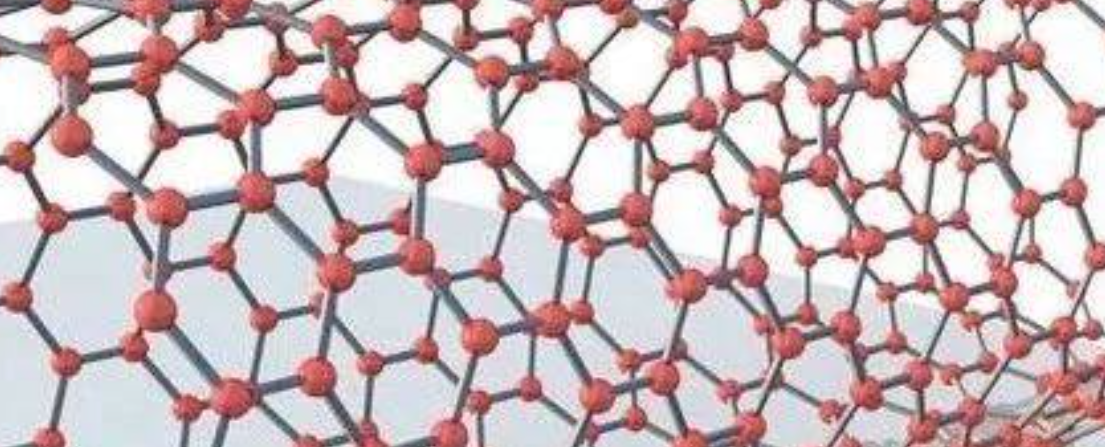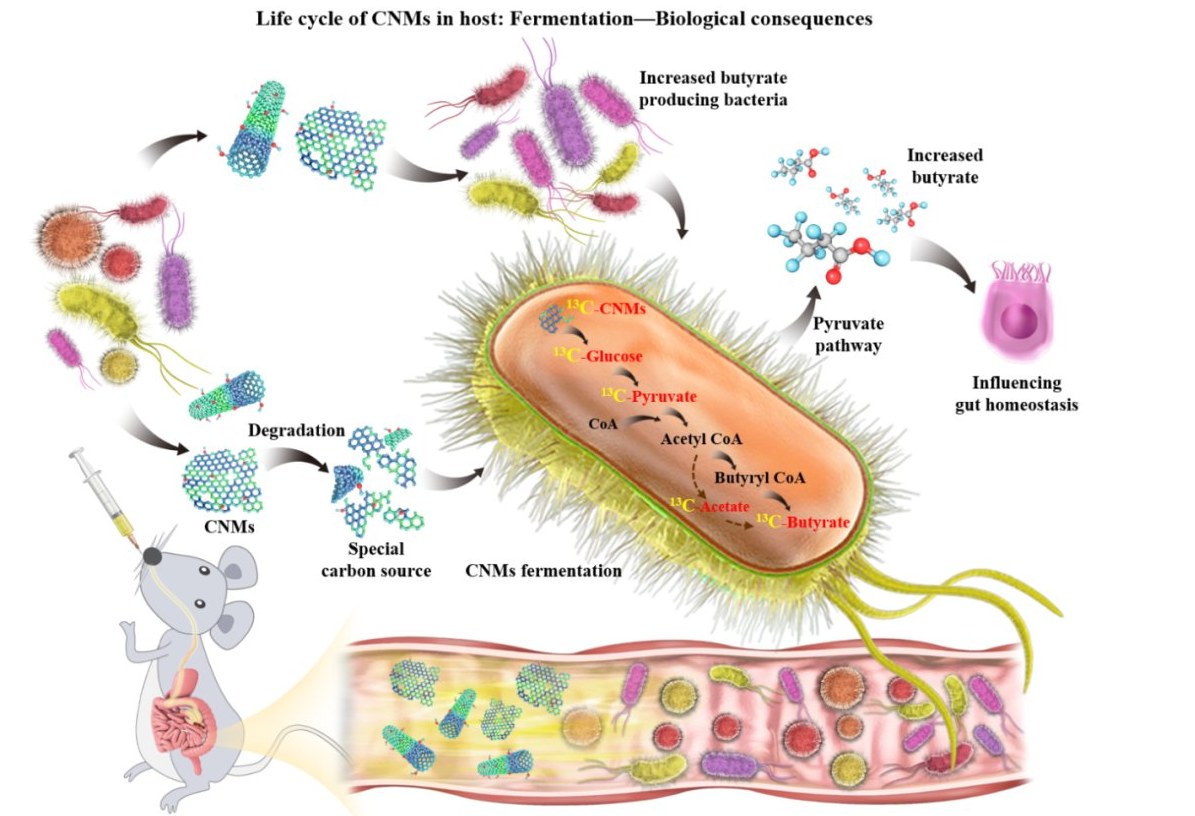Gut microbes are the primary target organ for nanomaterials entering the gut, and as the most secret “organ” of the human body, the biological metabolic processes controlled by gut microbes determine the ultimate fate of exogenous carbon nanomaterials in the host.
However, carbon nanomaterials and many components of the intestine, such as food, carbohydrates, proteins and lipids, as well as the basic building block of life, the ‘cell’, contain the same constituent element, carbon, and traditional analytical methods cannot accurately analyze the metabolic transformation of carbon nanomaterials in the intestine. The analysis of the metabolic transformation of carbon nanomaterials in the intestine is not possible with conventional methods.

Recently, Chunying Chen’s group at the National Center for Nanoscience has made important progress in the fermentation of synthetic carbon nanomaterials into endogenous organic metabolites by gut microbes. The research results were published in the Proceedings of the National Academy of Sciences of the United States of America under the title A new capacity of gut microbiota: fermentation of engineered inorganic carbon nanomaterials into endogenous organic metabolites. Proceedings of the National Academy of Sciences of the United States of America 2023, 120(20), e2218739120.
To address the major challenges in the study of the metabolic behavior of carbon materials in vivo, the research team established an innovative analytical method of stable isotope 13C skeleton labeling and metabolic flow isotope tracing to clearly resolve the “past life” of carbon nanomaterials in the intestinal microbes.
In this work, the team firstly discovered that intestinal microorganisms can degrade two synthetic carbon nanomaterials: single-walled carbon nanotubes and graphene oxide. By screening the metabolites of both carbon nanomaterials in the host intestine after oral exposure, we found that the content of short-chain fatty acids, such as acetic acid and butyric acid, was significantly elevated.
A new isotopic metabolic flow tracing method for graphene oxide was further developed to analyze and identify the products of the entire metabolic chain from 13C-graphene oxide degradation to 13C-butyric acid via the 13C-pyruvate pathway (13C-graphene oxide – 13C-glucose – 13C-pyruvate – 13C-acetic acid-13C-butyric acid); it was confirmed that carbon nanomaterials similar to dietary fiber can be used as a carbon source by intestinal microorganisms, undergo degradation and fermentation, and enter the pyruvate metabolic pathway to finally produce butyric acid by the metabolic mechanism.
A variety of key microbial metabolic enzymes, including hexokinase, pyruvate kinase, pyruvate dehydrogenase and butyrate kinase, were involved in the fermentation of carbon nanomaterials to produce butyric acid. Microbial sequencing revealed that butyric acid-producing bacteria are the dominant species for butyric acid production from carbon nanomaterials.
The work was published and reported as a highlight in Nature journal “Bacteria in the digestive tract can break down ingested carbon nanomaterials”.
Based on the innovative analytical method, this study has clarified the metabolic process of carbon nanomaterials from source-medium-terminus for the first time, breaking the traditional knowledge that microorganisms can only use carbohydrates to synthesize organic butyric acid molecules, and confirming that intestinal microorganisms can use synthetic carbon nanomaterials as carbon sources to generate endogenous organic metabolites. The new mechanism reveals the new biological fate of carbon nanomaterials in vivo, which provides important theoretical support for expanding the application scenarios of carbon nanomaterials.

Xuejing Cui, Associate Researcher of the National Center for Nanoscience, is the first author of the paper, and Chunying Chen, Researcher of the National Center for Nanoscience, is the corresponding author. The research work was supported by the National Key Research and Development Program of China, National Natural Science Foundation of China, and Strategic Pioneer Science and Technology Special Project of Chinese Academy of Sciences.
Link to original article: https://www.pnas.org/doi/10.1073/pnas.2218739120
Nature Highlight:https://www.nature.com/articles/d41586-023-01540-w
Source: National Center for Nanoscience











